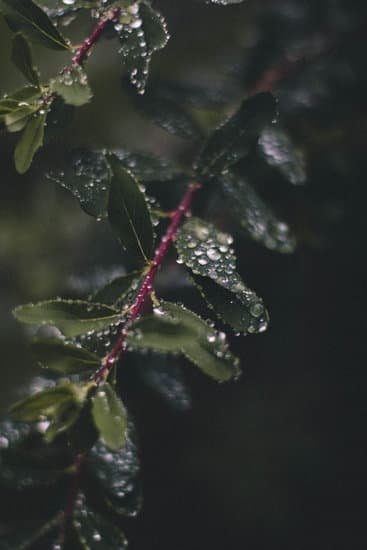When it comes to creating a beautiful outdoor space, incorporating green landscaping ideas is not only aesthetically pleasing but also beneficial for the environment. Green landscaping focuses on using sustainable practices, environmentally friendly materials, and conservation techniques to create a lush and eco-friendly outdoor area. In this article, we will explore the importance of green landscaping, its environmental and sustainability benefits, as well as practical tips and techniques for implementing it in your own outdoor space.
The concept of green landscaping goes beyond just creating an attractive garden or backyard. It encompasses a holistic approach that takes into consideration the impact of landscaping on the environment.
By utilizing eco-friendly practices and materials, green landscaping can help reduce carbon footprint, conserve water, and promote biodiversity in outdoor spaces. Whether you are a homeowner looking to create a sustainable garden or a business owner interested in environmentally responsible landscaping, embracing green landscaping ideas can contribute to a more sustainable future.
Throughout this article, we will delve into various aspects of green landscaping such as choosing the right plants for sustainability, implementing water conservation techniques, utilizing energy-efficient outdoor lighting options, and incorporating recycled and reclaimed materials in your landscape design. Additionally, we will provide valuable tips for maintaining a green landscape and showcase case studies of successful green landscaping projects to inspire you in creating your own eco-friendly outdoor oasis.
Benefits of Green Landscaping
The environmental and sustainability benefits of green landscaping are numerous and impactful. By incorporating eco-friendly practices into landscaping, individuals can contribute to the preservation of the environment and promote sustainability in their communities.
Reduced Water Consumption
One of the key environmental benefits of green landscaping is the reduction in water consumption. By choosing drought-resistant plants and implementing water-saving techniques such as drip irrigation and rainwater harvesting, homeowners can significantly minimize their outdoor water usage. This not only conserves a valuable resource but also decreases the strain on local water supplies.
Air Quality Improvement
Another significant environmental benefit of green landscaping is the improvement of air quality. Trees, shrubs, and other greenery serve as natural air filters, removing pollutants and producing oxygen. This helps to combat air pollution and create healthier outdoor environments for both humans and wildlife.
Wildlife Habitat Preservation
By creating a green landscape, individuals can provide vital habitats for local wildlife. Native plants attract beneficial insects, birds, and other animals, contributing to biodiversity conservation. This fosters a more balanced ecosystem and supports the overall health of the environment.
Incorporating these environmental benefits into your landscaping plans not only enhances the appeal of your outdoor space but also plays a crucial role in promoting sustainable living practices. With a focus on reducing water consumption, improving air quality, and preserving wildlife habitats, green landscaping is an essential component of creating a more environmentally friendly world.
Whether you’re designing a small garden or a large-scale landscape project, incorporating green landscaping ideas can make a significant impact on the planet’s health.
Choosing the Right Plants for Green Landscaping
When it comes to creating a green landscape, choosing the right plants is crucial. By selecting native and drought-resistant plants, you can significantly reduce water usage and maintenance while still achieving a beautiful and sustainable yard. Here are some tips for choosing the right plants for your green landscaping project:
1. Research Native Plants: Native plants are well-adapted to the local climate and soil conditions, making them low-maintenance and resilient. Look for native grasses, flowers, shrubs, and trees that will thrive in your area without requiring excessive watering or chemical inputs.
2. Consider Drought-Resistant Species: In regions with limited water resources, it’s essential to choose plants that can withstand dry conditions. Succulents, cacti, lavender, Russian sage, and yarrow are excellent choices for creating an attractive landscape that doesn’t rely on heavy irrigation.
3. Plant Trees Strategically: Trees provide shade and help cool outdoor spaces, reducing the need for air conditioning during hot months. Selecting the right tree species for your climate zone can have a significant impact on energy conservation and overall environmental benefits.
Incorporating these green landscaping ideas into your plant selection process can not only enhance the beauty of your outdoor space but also contribute to environmental sustainability by conserving water and supporting local ecosystems. By choosing native and drought-resistant plants wisely, you can create a thriving green landscape that requires minimal resources to maintain while benefiting the environment.
Water Conservation Techniques for Green Landscaping
One of the key elements of green landscaping is water conservation. By using techniques that reduce water usage in outdoor spaces, homeowners and businesses can create sustainable landscapes that are environmentally friendly. One popular water conservation technique is the use of drip irrigation systems, which deliver water directly to the roots of plants, minimizing evaporation and runoff.
Xeriscaping is another effective water conservation technique for green landscaping. This landscaping method involves using drought-tolerant plants, mulch, and efficient irrigation to create beautiful outdoor spaces that require minimal watering. In regions with limited access to water or where drought conditions are common, xeriscaping is a great way to maintain an attractive landscape while conserving water.
In addition to these techniques, rainwater harvesting can also be used to support green landscaping efforts. By collecting rainwater from roofs and storing it in barrels or cisterns, homeowners can use this natural resource to irrigate their gardens and lawns. This not only reduces reliance on municipal water sources but also helps prevent erosion and pollution from stormwater runoff.
| Water Conservation Techniques | Benefits |
|---|---|
| Drip Irrigation Systems | Minimizes evaporation and runoff |
| Xeriscaping | Requires minimal watering in drought-prone areas |
| Rainwater Harvesting | Reduces reliance on municipal water sources and prevents erosion/pollution |
Energy Efficient Outdoor Lighting Options
When it comes to creating an environmentally friendly and sustainable landscape, energy-efficient outdoor lighting is an essential consideration. Not only does energy-efficient outdoor lighting help reduce your carbon footprint, but it also saves you money on your energy bills. There are several options for green landscaping ideas when it comes to outdoor lighting.
One popular option is the use of solar-powered outdoor lights. These lights are powered by the sun, making them a cost-effective and eco-friendly choice. By harnessing solar energy during the day, these lights automatically illuminate your landscape at night without using any electricity from the grid. This not only reduces your energy consumption but also adds a beautiful ambiance to your outdoor space.
Another energy-efficient outdoor lighting option is the use of LED lights. LED lights use significantly less energy than traditional incandescent or fluorescent bulbs, making them an excellent choice for green landscaping. Not only do they last longer, but they also produce very little heat, further reducing energy consumption.
A third option for energy-efficient outdoor lighting is the use of motion sensor lights. These lights only turn on when they detect movement, helping to conserve even more energy. This can be especially useful for security purposes while still being environmentally conscious in your landscaping choices.
| Energy-Efficient Outdoor Lighting Option | Description |
|---|---|
| Solar-Powered Outdoor Lights | Lights powered by the sun, cost-effective and eco-friendly |
| LED Lights | Use significantly less energy than traditional bulbs and last longer |
| Motion Sensor Lights | Lights that turn on only when they detect movement, conserving more energy |
Using Recycled and Reclaimed Materials in Landscaping
When it comes to creating a green landscape, using recycled and reclaimed materials is an excellent way to reduce waste and minimize the environmental impact of landscaping projects. By incorporating these materials into your outdoor space, you can not only add a unique aesthetic but also contribute to sustainability efforts. Here are some ideas for using recycled and reclaimed materials in landscaping:
1. Reclaimed Wood: Consider using reclaimed wood for building raised garden beds, constructing outdoor furniture, or creating decorative fencing. Reclaimed wood adds character and warmth to your landscape while preventing perfectly good material from going to waste.
2. Recycled Glass Mulch: Instead of traditional mulch, opt for recycled glass mulch made from crushed bottles and other glass products. Not only does it provide effective weed control and moisture retention, but it also adds a pop of color to your garden beds.
3. Salvaged Bricks and Stones: Salvaged bricks and stones can be used for creating pathways, patios, and retaining walls. These materials lend a rustic charm to the landscape while reducing the need for newly manufactured hardscaping materials.
4. Upcycled Containers: Get creative with upcycled containers such as old tires, metal drums, or wooden crates for planting flowers, herbs, and small shrubs. Not only are you giving new life to these items, but you’re also minimizing the use of new plastic pots.
Incorporating recycled and reclaimed materials into your landscaping not only adds visual interest but also contributes to sustainable practices. By thinking outside the box and repurposing materials in creative ways, you can create a beautiful outdoor space that aligns with green landscaping ideas while reducing your environmental footprint.
Tips for Maintaining a Green Landscape
Maintaining a green landscape is just as important as creating one. It requires regular care and attention to ensure that your sustainable outdoor space remains healthy and thriving. Here are some tips for maintaining a green landscape:
Regular Watering and Mulching
One of the most important aspects of maintaining a green landscape is ensuring that your plants are receiving the right amount of water. Consider installing a drip irrigation system to efficiently water your plants, minimizing water waste. Additionally, mulching around your plants can help retain soil moisture, reduce weed growth, and improve soil health.
Proper Pruning and Trimming
Regular pruning and trimming of trees, shrubs, and other plants is essential for maintaining their health and promoting new growth. Remove dead or diseased branches to prevent the spread of disease, improve air circulation, and allow sunlight to reach all parts of the plant.
Weeding and Pest Control
Keep an eye out for weeds in your green landscape and promptly remove them to prevent them from competing with your plants for resources. Utilize natural pest control methods such as companion planting, beneficial insects, or organic pesticides to manage pest issues without harming the environment.
By following these maintenance tips, you can ensure that your green landscape remains vibrant and sustainable for years to come. Incorporating these practices into your landscaping routine will contribute to the overall success of your green landscaping ideas while promoting environmental sustainability.
Case Studies of Successful Green Landscaping Projects
Implementing green landscaping ideas in various projects has resulted in successful and sustainable outdoor spaces. One such example is the Brooklyn Botanic Garden in New York City, which has been lauded for its environmentally friendly approach to landscaping. The garden’s designers focused on using native plant species, employing water conservation techniques, and implementing energy-efficient lighting to create a beautiful and sustainable outdoor space for visitors to enjoy.
Another noteworthy case study is the California Academy of Sciences in San Francisco. The academy’s living roof, featuring a diverse array of plant species, serves as an excellent example of how green landscaping can benefit both the environment and the community. The living roof provides insulation, reduces stormwater runoff, and contributes to biodiversity in an urban setting. Its success has inspired other institutions and businesses to explore similar green landscaping initiatives.
Furthermore, the High Line park in New York City has garnered attention for its innovative use of recycled and reclaimed materials in its landscaping design. By repurposing old railway tracks and incorporating native plants into the park’s design, the High Line demonstrates how creative use of materials can contribute to sustainable landscape development. These case studies highlight the potential and benefits of incorporating green landscaping ideas into both public and private outdoor spaces for a more sustainable future.
Conclusion
In conclusion, embracing green landscaping is not only beneficial for the environment, but it also contributes to a sustainable future for generations to come. By understanding the importance of green landscaping and its numerous benefits – such as reducing carbon footprint, conserving water, and promoting biodiversity – individuals and communities can make a positive impact on the planet.
Choosing the right plants for green landscaping is essential in creating a sustainable outdoor space. Native plants, drought-resistant species, and low-maintenance vegetation are all great options for a green landscape that requires minimal water and upkeep. Additionally, implementing water conservation techniques such as rainwater harvesting and drip irrigation systems can further reduce water consumption in landscaping practices.
It is also important to consider energy-efficient outdoor lighting options to minimize energy consumption. LED lights, solar-powered fixtures, and motion-sensor lighting are excellent choices for illuminating outdoor spaces while minimizing environmental impact. In addition, using recycled and reclaimed materials in landscaping projects can further contribute to sustainability by reducing waste and carbon emissions. Overall, adopting these green landscaping ideas can lead us towards a more environmentally-friendly future.
Frequently Asked Questions
What Are the Green Landscape Techniques?
Green landscape techniques involve practices that are environmentally friendly and sustainable. This can include using native plants, practicing water conservation through efficient irrigation methods, implementing natural pest control measures, and minimizing the use of chemical fertilizers and pesticides.
How Can I Make My Yard Eco Friendly?
Making your yard eco-friendly involves incorporating sustainable landscaping practices like using drought-resistant plants, reducing water consumption through rainwater harvesting or drip irrigation, composting yard waste, and creating wildlife habitats. Additionally, choosing solar-powered outdoor lighting and using organic fertilizers can further enhance the eco-friendliness of your yard.
What Is the Best Color for Landscaping?
When it comes to landscaping, the best color is subjective and depends on personal preference as well as the overall design of the space. Neutral colors like greens and browns can create a natural and calming atmosphere, while bold colors like reds and purples can add vibrancy and visual interest.
It’s important to consider the surrounding environment and architecture when choosing the best color for landscaping to ensure that it complements the overall aesthetic appeal of the space.

Welcome to my gardening blog! I am passionate about plants and enjoy sharing my knowledge and experiences with others. In this blog, I will write about everything related to gardening, from tips on how to get started to updates on my own garden projects.





